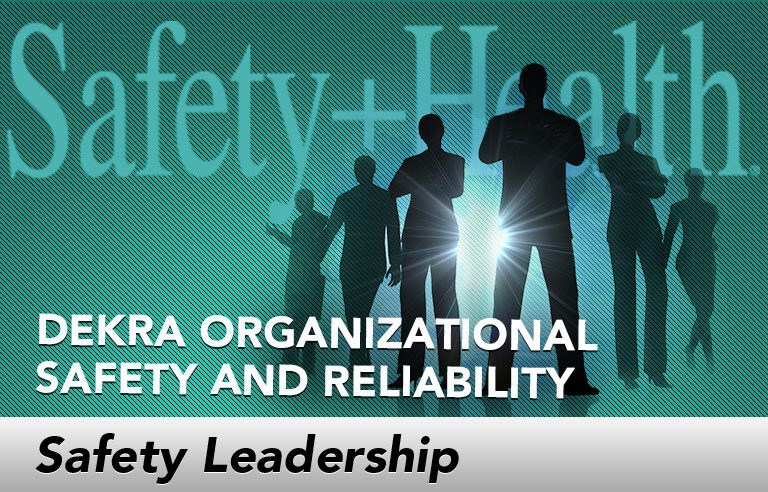Safety Leadership: Neuroscience and human error reduction

Editor’s Note: Achieving and sustaining an injury-free workplace demands strong leadership. In this monthly column, experts from global consulting firm DEKRA Insight share their point of view on what leaders need to know to guide their organizations to safety excellence.
Human errors can be the root cause of both serious individual injuries and catastrophic organizational accidents. In fact, in many industries such as rail transport and airlines, human errors have been identified as the top cause of accidents. Incident reports overall show that as many as 80 percent to 90 percent of serious injuries and accidents have been attributed to human error. And, even highly trained physicians and nurses commit errors in their task performance. Hospital studies show that doctors and nurses in intensive care units commit errors at the rate of 1.7 per patient per day. Yet, as safety professionals, what do these statistics really tell us?
Rethinking error
There is a long-accepted taxonomy of human errors that painstakingly differentiates these human failures into classifications. For example, skill-based errors are categorized as either slips or lapses, depending on whether they are action-based or memory-based. Mistakes are defined as either rule-based or knowledge-based. Yet, again, we have to ask the question: What does this classification system really tell us? Even with this breakdown in error types, the majority of safety professionals struggle to understand how best to reduce human errors. For example, what do we do if an error is memory-based? All too often, the solutions are either to “engineer out” the humans from the process or simply to throw up our hands and revert back to the old adage, “To err is human.” We cannot keep looking away from the real issue of human errors, which is our lack of knowledge and understanding about the real root causes – especially when most errors are errors of inconsistency rather than ignorance, ineptitude or indifference.
Recent neuroscience research is revealing some significant new insights about the brain, offering new ways to approach the reduction of human errors in our workplaces. For example, we are learning that we do not see with our eyes, but with our brains. This means that our eyes are not serving as active video cameras, capturing every detail of the world around us.
Rather, our pre-conscious brain is constantly sending our eyes out on “looking missions” to check out and verify what our brains predict is going on “out there.” The brain’s primary mission here, unless intentionally directed otherwise, is to determine if there are any unanticipated risks to our surviving and thriving. According to neuroscientists, that means our eyes and our brains are more likely to see what they expect to see, rather than the reality of what is going on in the external world.
New knowledge, new solutions
Knowing this one simple fact about the brain gives us powerful insights about how to prevent many of the human errors currently occurring in our work-places. This single insight has implications for how we design our visual environments, and how we generate accurate situational awareness among our workforce. It means that we cannot take a passive approach to essential observational tasks, assuming people will, of course, see what they should see. Instead, to prevent serious injuries and catastrophic accidents, we need to train people to be “active noticers” of all the weak signals in their visual environments. And, we have to build in human as well as technological redundancy on any visual search or watch-keeping tasks that are critical to process and people safety.
Fortunately, we can use neuroscience findings to develop a deeper understanding of the error mechanisms in the human brain and the impact of fatigue on brain functioning. We also can use this growing body of science to better design our organizational systems and shape our leadership messaging to mitigate brain-centric errors. By applying the lessons of neuroscience, we can finally drill down and answer the “why” questions about human errors, and make our people, processes and environments safer.
 Susan L. Koen, Ph.D., is an organizational psychologist and CEO and founder of RoundtheClock Resources, a partner of DEKRA Insight. Dr. Koen is an internationally recognized expert on human reliability, human fatigue in the workplace and high-performance work systems.
Susan L. Koen, Ph.D., is an organizational psychologist and CEO and founder of RoundtheClock Resources, a partner of DEKRA Insight. Dr. Koen is an internationally recognized expert on human reliability, human fatigue in the workplace and high-performance work systems.
Post a comment to this article
Safety+Health welcomes comments that promote respectful dialogue. Please stay on topic. Comments that contain personal attacks, profanity or abusive language – or those aggressively promoting products or services – will be removed. We reserve the right to determine which comments violate our comment policy. (Anonymous comments are welcome; merely skip the “name” field in the comment box. An email address is required but will not be included with your comment.)

